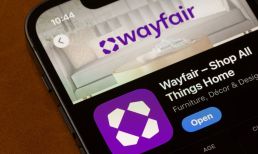Plant shopping in Ohio is about to become a more immersive experience than the average gardening enthusiast is used to, as Greendigs, a direct-to-consumer (D2C) marketplace for design-forward plants and décor, is opening what it calls a “Living Design” experience.
Part retail incubator, part interactive gardening education center and part content creation studio, Living Design was created, according to Greendigs, to connect both avid plant collectors and newbies to “the magic of live greenery” in a location where they can find ideas, instruction and inspiration — and an easy place to purchase plants and accessories. Products are also available for purchase on ShopGreendigs.com, the brand’s eCommerce site.
“This is not a typical plant shop. Rather, it’s a laboratory where guests are empowered to get their hands dirty, to awaken their inner green thumbs and to bring nature into their homes in ways that complement and enhance their lifestyles,” noted David Stark, designer of the space.
It’s certainly not a typical plant shop — but as recent reports indicate, “typical shops” seem to be going out of style, as brands are working overtime to redesign the physical shopping experience. And big brands are making big moves. As of this month, Nike has launched its Unite Stores, built to help local consumers connect more closely with sports. The stores feature elements like a community wall to highlight the store team and local partnerships, and self-service tools to help shoppers discover Nike through contactless options like self-checkout kiosks or BOPIS offerings. Products featured in the stores are based on community interest, and store employees are trained to serve as coaches/community ambassadors.
UGG, meanwhile, has just announced the opening of its Manhattan flagship — a 12,000+-square-foot shop designed to bring its California roots to its new New York home, according to the brand.
“We are thrilled to launch the new UGG flagship on Fifth Avenue in New York City,” said Stefano Caroti, president of Omnichannel for Deckers Brands. “As the pinnacle expression of our brand, we will showcase the breadth and depth of UGG as a true lifestyle brand and provide the customer with the ultimate brand experience.”
Advertisement: Scroll to Continue
Caroti further noted that the new space was created to “transcend reality to characterize both the emotion and warmth of the California lifestyle that captivates the world. From nature to home and back again, this journey captures the aura of the UGG brand by highlighting the specific qualities of a California landscape that defines it – light, texture and air.”
7-Eleven didn’t focus much on light, texture and air in its announcement of the expansion of its Evolutions concept stores. Instead, it highlights digital initiatives like mobile checkout technology that allows customers to skip the checkout line and pay for their (non-age-restricted) purchases on their smartphones, as well as the 7NOW delivery app that allows customers to have items delivered straight to their doorsteps or order ahead of time for pickup.
“7‑Eleven continues to push boundaries and try new solutions to answer customers’ needs,” said Chris Tanco, 7‑Eleven’s executive vice president and chief operating officer. “We have been ahead of the game with digital technology — specifically with contactless payments, home delivery and loyalty programs. That has proven particularly important now as we continue to navigate the pandemic. The shopping experience will never stop evolving, and we are laser-focused on our bright future serving customers.”
Even IKEA, a brand that has been famous for the last seven-and-a-half decades for two things — its huge destination stores and its delicious Swedish meatballs — is moving away from the big store model (though the meatballs remain unchanged). According to reports, IKEA is recreating its store strategy to include urban locations and even neighborhood shops specializing in design services or serving as places to pick up orders placed online. The company aims to have all three formats in five key cities by 2024.
“We have been testing everything,” Javier Quiñones, president and chief sustainability officer of IKEA Retail U.S., said in an interview as the retailer was releasing its fiscal year 2020 Annual Summary, a kind of yearly report for the privately held company. “We’re creating an IKEA for the future.”
And IKEA is far from the only long-time player making a big adjustment to its physical presentation. Grocery stores, long famed for being a bastion of incredibly familiar designs, are also attempting to take a turn for the modern. That is visible in the proliferation of options to buy online for delivery or curbside pickup, the expansion of smart carts and other high-tech tools, and even the redesign of the physical structure itself.
Eric Price, the studio director of commercial and hospitality projects at Lowney Architecture, told Fast Company that stores have started to trend toward smaller, more community-focused and more flexible floor plan designs. “We’ve been building for the past 50 years more of the supermarkets and hyper-marts that were 60,000, 80,000 or 120,000 square feet, and now they’re getting a lot smaller, certainly in urban areas,” Price said, adding that the pandemic has only accelerated that shift.
The changes are varied, but the themes seem to be the same: Retailers are rushing to build shopping spots that are more experiential and unique, likely to motivate consumers whose habits have changed to online shopping to come out and see what is at the store. They are also digitally upgrading to ensure that those unique experiences remain as convenient as shopping on the couch — or as close as possible.




